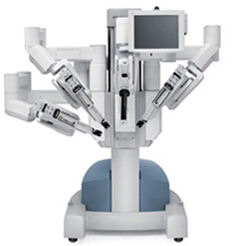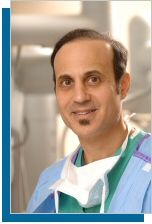|
|||||
| Dr Mark Moore is an experienced, private practice Anesthesiologist, delivering anesthesia services and pain management to patients at Tallahassee Memorial Hospital. He has sub-specializations in obstetric and gynecologic anesthesia and pediatric anesthesia and triple Board-Certifications in Anesthesiology, Pain Management, and Pharmacy. He has successfully delivered over 21,000 anesthetics, and 6500 pain management visits and treatments. Dr. Moore is an Anesthesia Healthcare Provider and accepts insurances from the following companies: Vista/Health Plan Southeast, Blue Cross/Blue Shield, Capital Health Plan, United Health Care, Cigna, Humana, Aetna, and most other plans. |
The State of Florida now requires office surgery facilities to be inspected by the Department of Heatlh. Dr Moore was appointed to the first team of Office Surgery Inspectors for the Florida Board of Medicine, in September of 2000. Dr.Moore received the Tallahassee Police Service Award on October 2, 2008. Dr Moore is the current president of OTNA. |
Mark Moore, M. D. Email Dr. Moore--Click Here National Practitioners Data Bank Medical Chart
Case Review and Continuously active licenses in For Spanish translation, click here:
En Español |
||||||||||||||
Your anesthesiologist, Dr Mark Moore, is a specially trained physician who is responsible for managing vital life functions, including breathing, heart rhythm and blood pressure while administering anesthesia to relieve the pain of surgery. During surgery, your Anesthesiologist Dr Moore makes medical judgements and is responsible for the management of your physical condition while under anesthesia. Should your condition after anesthesia require special care in the Recovery Room, it is likely that the physician who treats you will be your anesthesiologist. Dr Moore is not only your advocate but also the physician uniquely qualified and experienced to make your surgery, anesthesia and recovery as safe and comfortable as possible. Anesthesia care can be delivered by an anesthesia care team (ACT) when a doctor and nurse work cooperatively, or when a doctor and anesthesia associates work together, or by private practice physician anesthesiologists such as Dr Moore. There are several types of anesthesia: general anesthesia--the patient is completely asleep; IV sedation (twilight sleep)--the patient is sedated and usually asleep but no breathing tube is placed and patient breathes on their own; regional anesthesia--only part of the body is asleep, using an epidural or spinal; or local anesthesia--medication is injected into an area to numb it so there is no pain with surgery. Epidural anesthesia, or simply "epidurals" are medications given most often given to pregnant women to reduce the pain of labor during childbirth and delivery.
Anesthesia for Total Abdominal Hysterectomy (TAH) or Total Vaginal
Hysterectomy (TVH)--general
anesthesia or regional
anesthesia. Anesthesia for any Laparoscopic procedure--general anesthesia. Anesthesia for LEEP cervical biopsy--IV Sedation, twilight sleep, MAC Anesthesia for Dilitation and Curretage (D/C or D and C or DnC)--twilight sleep, IV sedation, MAC Anesthesia for bilateral tubal ligation, BTL--general anesthesia or regional anesthesia Anesthesia for Cesarean Section (CSX)--usually epidural anesthesia or spinal anesthesia but general anesthesia is often given for emergency cesarean section Anesthesia for gall bladder surgery--general anesthesia Anesthesia for hernia surgery--general anesthesia, regional anesthesia or IV anesthesia Anesthesia for pediatric (children) surgery--usually general but dependent on the specific type. Ear Tube Surgery (BMT, myringotomy) --general anesthesia, tonsillectomy/tonsil removal/adenoid removal/adenoidectomy--general anesthesia. Pediatric eye surgery for children--general anesthesia. Anesthesia for knee arthroscopy or shoulder arthroscopy--general anesthesia, occasionally regional anesthesia Anesthesia for heart or brain surgery--general anesthesia PCA-Patient Controlled Analgesia, is an automatic pump that allows the patient to give themselves pain medicine after surgery, so they can get immediate relief, rather than call on a nurse to draw it up and administer the dose. Dr Moore is a specialist in womens and childrens anesthesia and would be happy to answer questions you may about anesthesia and surgery. Please email us or call us at our office line.
TYPES OF ANESTHESIA There are 25 million surgeries performed each year in the United States, in Hospitals, Out-patient Surgery Centers, Ambulatory Surgery Centers and private doctors offices. Majority of them will need anesthesia to provide patient comfort and insensibility to pain. There are 4 million babies delivered each year, often requiring some form of anesthesia. Most of these anesthetics will be provided by a physician Anesthesiologist who may also be working together with a nurse anesthetist/CRNA. What types of anesthesia are there, and what types of anesthesia are given for the typical kinds of surgeries performed today? MAC ANESTHESIA (SEDATION/TWILIGHT SLEEP) LOCAL ANESTHESIA GENERAL ANESTHESIA--this is when a patient is asleep deeply to the point of unconsciousness. It is deeper than when you are asleep at night. General Anesthesia is administered by an intravenous induction or a gas induction. Induction means the patient is placed into the sleeping state of unconsciousness. IV induction is done by giving medications into the IV that quickly puts the patient to sleep (10-12 seconds). A gas induction is performed with a mask, where the patient, usually a child, breaths gases from a mask until they fall asleep. This take longer than the IV induction, on the order of a few minutes. Mask inductions are done for children because they don’t have an IV in place. Most infants and young children do not tolerate being prodded or poked with needles while they are awake--so the IV is started after they go to sleep. Now that the patient is asleep, they need to stay asleep for the entire time of the surgery. This is accomplished with anesthesia gases (commonly, sevoflurane, isoflurane) or with a continuous intravenous infusion of induction agents (usually propofol, diprivan). How do patients wake up from this general anesthesia? In the case of anesthesia gases, they are turned off at the end of the surgery and the patient awakens slowly as they breathe off the gases. In the case of IV infusions, the medicine infusion is stopped and the patient awakens slowly as their body redistributes the medications away from the brain, and metabolizes these medicines in the liver and excretes them through the kidney. During general anesthesia there is intense monitoring of the patients vital signs: every heartbeat, every breath, is followed, along with the exact concentration of oxygen in the patients bloodstream. These and many other vital signs and parameters are checked frequently to ensure they stay fully asleep during the surgery, tolerate it well, then a safe return of the patient to consciousness when the surgeon is finished with the procedure. Examples of types of surgeries that are performed under general anesthesia include: gynecologic surgery BTL's laparoscopy, laparoscopic cholecystectomy (gallbladder surgery), inguinal and ventral hernia repairs, abdominal surgery like colon resections, appendectomy, small and large bowel surgery, head and neck surgery such as tonsillectomy and adenoidectomy(T/A or TA), bilateral myringotomy tube placements (BMT's, children’s ear tubes), thyroidectomy, gastric bypass, peptic ulcer and duodenal ulcer surgery, gastroesophageal surgery, orthopedic surgery, plastic surgery like breast implants/augmentation, facial and facelifts, abdominoplasty, and of course heart/lung/cardiac/thoracic surgery, and neurosurgery.
REGIONAL ANESTHESIA--there are several types of regional anesthesia: spinal anesthesia, epidural anesthesia, and regional block anesthesia. Spinal Anesthesia involves an injection of anesthesia into the low back on into the spinal fluid (opposite of a "spinal tap", where a needle goes into the spinal fluid to withdraw a sample--to check for meningitis). When anesthesia is injected into the spinal fluid (CSF-cerebrospinal fluid), it numbs the spinal nerves that are present in the spinal fluid and blocks pain in the lower part of the body. It can work anywhere from the chest on down. 'saddle blocks' work to numb only from the waist down. A patient can be awake during surgery when under spinal anesthesia, because they have no sensation or feeling in the parts of the body being operated on. Of course, only certain types of surgery can be done under Regional Anesthesia. An example of types of surgery that can be done under regional/spinal/epidural anesthesia include: cesarean section (CSX, or C-Section), orthopedic procedure such as knee arthroscopy and hip or knee joint surgery, lower abdominal surgeries, urologic procedures like TURP or prostatectomy, and gynecologic cerclage (suture around an incompetent cervix), BTL (bilateral tubal ligation), LBTL (laparoscopic bilateral tubal ligations). That said, spinal and epidural anesthesia is NOT used for outpatient surgeries very often. Out patient surgery is usually done under IV sedation or General Anesthesia.
EPIDURAL ANESTHESIA--the word "epidural" is a general term to refer to a way to deliver anesthetic medications --there are several different types of epidurals, depending on their use and the mix of medications infused into them. The definition or meaning of the word "epidural" has to do with "an area on top of the dural space" which is the covering of the spinal canal. So an epidural is placement of medications into the epidural space, directly by injection or more usually through a tiny catheter, so the medicines can be as a continuous infusion. There are epidurals that are used for labor and delivery, epidurals that are used for surgery, such as cesarean section or other abdominal surgery, and epidurals that are given as back pain treatments (these usually have steroids added). Epidurals that are used for surgery make the body numb from the chest down. The patient is awake during the surgery but can be sedated so they do not become too anxious. Epidurals can be continued after the surgery to keep the site of surgery pain-free during the postoperative recovery period. MAC--Monitored Anesthesia Care--is sometimes called "IV Sedation" or "twilight sleep" or "twilite sedation" or "conscious sedation" (sp.concious/consious). No matter how it is referred to, it is still a very important method of anesthetic delivery. The name implies a 'light sleep', and there are many variations and levels of anesthesia dependent on the anesthesiologist. It is the anesthesiologist who determines how much medication to give. During this procedure, the anesthesiologist may give intravenous medications to place the patient in a light sleep. The surgeon administers injections of local anesthetics at this time so as not to cause discomfort to the patient. The patient breathes on their own, and does not need a ventilator or anesthetic gas. By having an anesthesiologist give sedation, even minor procedures can be easily performed without pain. These procedures are done in hospitals or surgery centers. Examples of types of surgery that can be done with MAC or IV Sedation/conscious sedation include: breast biopsy, Gynecologic procedures like LEEP/LOOP, D/C, D and C, D/E, D and E (dilatation and evacuation for spontaneous incomplete abortion or miscarriage), and colonoscopy or EGD (esophagogastroduodenoscopy). LMA Anesthesia--The use of an LMA (laryngeal mask airway) during anesthesia is often employed while the patient is under general anesthesia. The LMA provides an airway for either spontaneous or controlled breathing. Because it fits outside the trachea and epiglottis (glottic opening) rather than inside (as an endotracheal tube would) it has limitations in airway security. There are risks to all surgery and anesthesia. Anesthesia Risks are dependent on the type of anesthesia that is given. Positioning during Anesthesia--There are several positions used during
a surgical and anesthesia procedure: Anesthesia for Robotic Surgery--The administration of anesthesia for the new davinci robotic surgical procedures like davinci assisted robotic prostatectomy and davinci robot gynecologic surgery such as robotic assisted hysterectomy or davinci robot ovarian cystectomy or robotic diagnostic laparoscopy involves special methods in anesthesiology unlike other routine anesthetic procedures. Specifically, there are physiologic and mechanical issues that must be addressed, such as length of procedure, extreme positioning of the patients, fluid balance, and pharmacologic half-life of drugs. Is Tallahassee Anesthesia Associates Capital City's best anesthesology service? How does one find the best anesthesiologist in Tallahassee? Who is the best robotic surgeon team in Tallahassee? Search the net. LPN/RN Nurse Position for Hire, Nursing Job Help Wanted Teenage Drinking And Driving Statistics and Information View the Ask Dr. Moore archives Anesthesia Medications Anesthesia
Ventilator Settings, Anesthesia
Ventilator (Breathing Machine), Anesthesia
Monitor,
|
||||||||||||||||
Dr. Mark Moore is not a member of Anesthesia Associates of
Tallahassee
Copyright © 2000 - 2009 All Rights Reserved Tallahassee
Anesthesiology
Copyright © 2000 - 2009 All Rights Reserved Washington
Publishers
This web page is best viewed in 1024 x 768 resolution.
Last updated June 2009. Over 1,230,000 page views.
This web site is maintained by Washington Publishers, Tallahassee Florida,
USA, and uses Sun Domains and Software.
To have objectionable or potentially copyrighted material evaluated for removal
on this site, click here.
Washington Publishers is not an affiliate of Inside
Washington Publishers.
Learn more about our current privacy
and information practices.
RELATED KEYWORDS: marc, marc moore, anesthesology, anesthesilogy, anasthesiology, anasthesia, anesthesa, anesthesiolagist, anesthesiolegist, anasthesiologist, anesthesologist, talahassee, tallahasee, tallahasse, iv sadation, vaperizors, genaral anesthesia, memmorial, memoreal, hospitel, hostiple, floreda, lidocain, sterrile gloves, ventalator, ventilater, endotrachial, endotraecheal, endotraechial, laringescope, laryngscope, conscousness, conscous, medicatons, medicatins, anesthetise, phenermine, fentermine, pentermine, penermine, zanax, zannax, xannax, zanacks, xanacks, xanacs, zanacs, tramadol, tramadal, vigra, vaigra, viargra, viarga, loretab, lortab, loercet, lorcet, lorset, perkocet, perkoset, perkodan, percedan, oxycotton, oxicontin, oxycotin, oxycodone, forum, blog
|
|
|
|
||||
| Ads by Washington Publishers | |||||||













